The T-50 Golden Eagle, formerly known as the KTX-2, jet trainer and light attack aircraft was built for the Republic of Korea Air Force (RoKAF). The aircraft was developed in the T-50A advanced trainer and T-50B lead in fighter trainer versions.
The T-50 LIFT is called the A-50 by the RoKAF. The T-50 is designed to provide pilot training for current and next-generation fighters such as advanced F-16s, F-22s and the F-35 joint strike fighter.
T-50 Golden Eagle programme and orders
The first flight of the T-50 took place in August 2002. The RoKAF has a requirement for 50 T-50 trainers and 44 T-50 LIFTs. RoKAF placed a production contract for the first 25 T-50 in December 2003 and the first production aircraft was rolled out in August 2005.
 T-50 first prototype 001
T-50 first prototype 001
| Development History: | |
| KTX-2 | Initial project designation. |
| T-50A | Initial designation for unarmed Advanced Jet Trainer version. |
| T-50B | Initial designation for Fighter Lead In Trainer version, with APG-67 radar and M61 internal gun. Later incorporated into A-50 version. |
| T-50 Golden Eagle | Official designation for unarmed Advanced Jet Trainer version. Also known as T-50 AJT. |
| A-50 Golden Eagle | Official RoKAF designation for armed version with APG-67 radar and M61 internal gun. Also known as T-50 LIFT. Fighter Lead In Trainer/Light Attack variant. |
Source aeroflight.co.uk
The first two aircraft were delivered to RoKAF in December 2005 and entered service in April 2007. A total of 13 aircraft were deployed for training purposes in 2007.
Two squadrons (30 to 40 aircraft) began operations by 2008. The 50th and final T-50 was delivered to the RoKAF in May 2010.
One thousand flights have been completed in the test programme. The A-50 made its first flight in September 2003. A programme of weapon delivery flight testing was completed and deliveries of the A-50 began in 2009.
In December 2006, the RoKAF placed a second production contract for 50 T-50 and A-50 aircraft.
KAI developed a fighter version based on the T-50, called the FA-50 for the RoKAF, which has a requirement for 60 aircraft to replace the F-5.
 RoKAF TA-50
RoKAF TA-50
In December 2011, KAI signed a production contract with Defense Acquisition Programme Administration (DAPA) to deliver 20 FA-50 aircraft by 2014. The aircraft obtained type certificate in November 2012. The FA-50 is fitted with air-to-air and air-to-surface missiles, 20mm cannon, Joint Direct Attack Munitions (JDAM) and Sensor Fused Weapon (SFW).
FA-50 Light Combat Aircraft

The FA-50 is the most advanced version of the T-50, possessing more internal fuel capacity, enhanced avionics, a longer radome and a tactical datalink. It is equipped with a modified Israeli EL/M-2032 pulse-Doppler radar with Korean-specific modifications by LIG Nex1.
EL/M-2032 pulse-Doppler radar (FA-50 version)
 Israeli EL/M-2032 pulse-Doppler radar
Israeli EL/M-2032 pulse-Doppler radar
EL/M-2032 is an advanced pulse Doppler, multimode fire control radar intended for multi-mission fighter aircraft. It is suitable for air-to-air and air-to-surface modes. In the air-to-air mode the radar delivers long-range target detection and tracking capability. In the air-to-surface mode, the radar generates high resolution ground imagery using Synthetic Aperture Radar (SAR) technology for smart weapons guidance. Air-to-Sea mode provides long-range detection and tracking as well as target identification capability.
EL/M-2032 air-to-air mode has a detection and tracking range of up to 150 km, the air-to-ground mode generates high resolution radar imagery of locations at up to 150 km, and air-to-sea mode can detect and classify naval targets at ranges of up to 300 km. The radar system weighs between 72 and 100 kg. To date, Elta Systems has integrated this radar system into F-4, F-5, F-16, Mirage and Mig-21. Source deagel.com
| GENERAL DATA: | |
|---|---|
| Type: Radar | Altitude Max: 0 m |
| Range Max: 148.2 km | Altitude Min: 0 m |
| Range Min: 0.2 km | Generation: Early 2000s |
| Properties: Identification Friend or Foe (IFF) [Side Info], Moving Target Indicator (MTI), Pulse Doppler Radar (Full LDSD Capability) |
| SENSORS / EW: |
|---|
| EL/M-2032 – Radar Role: Radar, FCR, Air-to-Air & Air-to-Surface, Medium-Range Max Range: 148.2 km |
Source cmano-db.com
The engine could be either Eurojet EJ200 or General Electric F414, upgraded to 20,000 lb or 22,000 lb thrust, roughly 12–25% higher than the F404’s thrust; and are offered to prospective customers for the T-50. The radar of the FA-50 has a range two-thirds greater than the TA-50’s radar.
Eurojet EJ200 (Option)
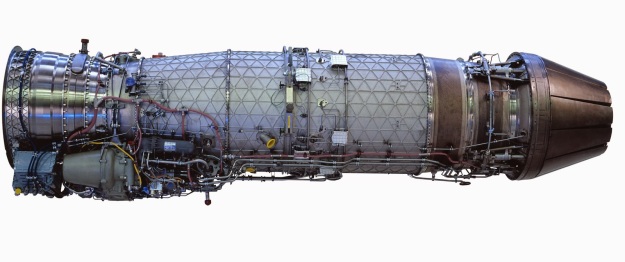 Eurojet EJ200
Eurojet EJ200
The EJ200 is a twin shaft reheated turbofan, with three low pressure (LP) and five high pressure (HP) compressor stages, powered by two single-stage turbines (LP and HP). The combustor is annular with airspray injectors. The engine reheat system features a 3-stage manifold system and a convergent/divergent nozzle. Engine control is by an integrated application of blisks, wide-chord aerofoils, single crystal blades, an airspray combustion system, and an integral Full Authority Digital Engine Control (FADEC) providing low pilot workload and comprehensive fleet management capability.
| Specification | EJ200 |
| Thrust lbf (kN) | 20,000 (89) reheated (13,500 dry) |
| Bypass ratio | 0.4 |
| Pressure ratio | 26 |
| Length in (m) | 157 (4) |
| Diameter in (m) | 29 (0.74) |
| Basic weight lb (Kg) | 2,180 (989) |
| Compressor | 3LP, 5HP |
| Turbine | 1HP, 1LP |
| Applications | Eurofighter Typhoon |
*Technical data (ISA SLS)
Source rolls-royce.com
General Electric F414 (Option)
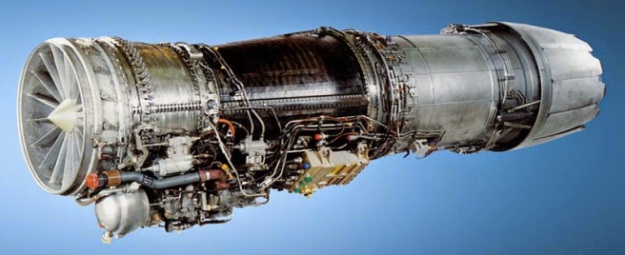 General Electric F414 turbo-fan engines
General Electric F414 turbo-fan engines
The General Electric F414-GE-400 is a 22,000-pound class afterburning turbofan engine. The engine features an axial compressor with 3 fan stages and 7 high-pressure compressor stages, and 1 high-pressure and 1 low-pressure turbine stage. At a weight of 2,445 pounds, the F414-GE-400 has a thrust-to-weight ratio of 9. The F414 is one of the U.S. Navy’s newest and most advanced aircraft engines. It incorporates advanced technology with the proven design base of its F404 predecessor – for example the F414 features a FADEC (Full Authority Digital Engine Control) system – to provide the Boeing F/A-18E/F Super Hornet and the EA-18G Growler with a durable, reliable and easy-to-maintain engine.
The EL/M-2032 was initially chosen over Lockheed Martin’s preferred AN/APG-67(V)4 and SELEX Vixen 500E active electronically scanned array (AESA) radars. Other AESA radars such as Raytheon Advanced Combat Radar and Northrop Grumman’s Scalable Agile Beam Radar are options for future production, and may be shared with the radar chosen for USAF and ROKAF F-16 fighters. Samsung Thales is also independently developing a domestic multi-mode AESA radar for the FA-50. Source wikiwand.com
Manufacturer: General Electric Co.
Thrust: 22,000 pounds
Overall Pressure Ratio at Maximum Power: 30
Thrust-to-Weight Ratio: 9
Compressor: Two-spool, axial flow, three-stage fan
LP-HP Compressor Stages: 0-7
HP-LP Turbine Stages: 1-1
Combustor Type: Annular
Engine Control: FADEC
Length: 154 in (3.91 m)
Diameter: 35 in (88.9 cm)
Dry Weight: 2,445 lbs (1,109 kg)
Platforms: F/A-18E/F Super Hornet; EA-18G Growler
Source fi-powerweb.com
The avionics package consists of embedded Inertial Navigation System/Global Positioning System (INS/GPS), integrated mission computer, identification, friend or foe (IFF), radar altimeter, multimode radar, store management system, UHF/VHF radio, tactical data link, data transfer and recording system, Radar Warning Receiver (RWR) and Counter Measure Dispensing System (CMDS).
Weapon systems on the FA-50
The FA-50 aircraft can carry a weapons load of up to 4.5t. The aircraft can be armed with AIM-9 Sidewinder short-range air-to-air missiles, AGM-65 Maverick air-to-ground tactical missiles (AGM), GBU-38/B Joint Direct Attack Munitions (JDAM), CBU-105 Sensor Fused Weapon (SFW), Mk-82 Low Drag General Purpose (LDGP) bombs and Cluster Bomb Units (CBUs).
The aircraft is also mounted with an internal, three-barrel 20mm Gatling gun and LAU-3/A 19-tube 2.75″ rocket launcher for firing Folding-Fin Aerial Rockets (FFAR). The wide range of weapon systems aboard the FA-50 allows it to counter multiple threats in today’s complex battlefield scenario. Source airforce-technology.com (Weapons see below)
Philippine Air Force FA-50
 Philippine Air Force FA-50
Philippine Air Force FA-50
The Philippine Air Force chose 12 KAI TA-50 aircraft to fulfill its requirement for a light attack and lead-in fighter trainer aircraft. The Department of National Defense (DND) announced the selection of the type in August 2012. Funding for 12 aircraft was approved by Congress on September 2012, but by late January 2013, state media reported that the FA-50, not the TA-50 as previously reported, was selected for the procurement.
In October 2013, President Aquino said the DND was close to finalizing the FA-50 deal, and on 19 October 2013, President Aquino and President Park Geun-hye of South Korea signed a memorandum of understanding (MoU) with provisions for acquisitions. On 13 February 2014, President Aquino approved the payment scheme for purchasing 12 lead-in fighter trainers with P18.9 billion ($415.7 million) budgeted. On 28 March 2014, the Philippines’ Department of National Defense signed a contract for 12 FA-50 light attack aircraft worth P18.9 billion (US$421.12 million).
Deliveries began in November 2015 and are expected to be completed in May 2017. The first four FA-50PH aircraft delivered were displayed on 1 December 2016.
Plans call for 3 to 4 of 12 aircraft to be fitted with capability for beyond visual range (BVR) intercept. In March 2015, Stockholm International Peace Research Institute (SIPRI) reported that the Philippines plans to order additional FA-50s, which is supported by the PAF flight plan 2028 that lists another 12 FA-50s planned for the future.
On 26 January 2017, the Philippine Air Force used the FA-50PH in combat for the first time when two aircraft conducted a nighttime strike on terrorist hideouts in Butig, Lanao del Sur province in Mindanao. Source wikiwand.com
 Image: koreaaero.com
Image: koreaaero.com
The TA-50, the maiden armed variant of T-50, was introduced in January 2011 for deployment in lead-in fighter training operations. Indonesia awarded a $400m contract to KAI in May 2011 to supply 16 T-50s. Deliveries will be completed by the end of 2013.
Indonesia T-50i
 Indonesia T-50i
Indonesia T-50i
The Golden Eagles are to replace the Hawk Mk 53 in Indonesian Air Force service. Indonesia’s version has been designated T-50i. Deliveries began in September 2013. The last pair of T-50i aircraft were delivered in January 2014. Source wikiwand.com
Royal Thai Air Force T-50TH
In September 2015, the Thai government chose the KAI T-50 variant for its air force over the Chinese Hongdu L-15 to replace its aging L-39 Albatros trainers. The 4 T-50TH aircraft are scheduled to be delivered by March 2018. Source wikiwand.com

IqAF has received its first batch of (KAI) T-50 jets: Here

Excerpt
Iraqi Air Force (IqAF) commander Lieutenant General Anwar Hamad Amin announced on 16 March that the IqAF has received its first batch of Korean Aerospace Industries (KAI) T-50 jets.
KAI to conclude an export contract with Argentina for 600 billion won for FA- 50: Here
Excerpt
Korea Aerospace Industries ( KAI ) will conclude an export contract with Argentina for an export of 600 billion won for the FA- 50. KAI and the Korean government agreed to complete the contract by December , with the South Korean government to export 12 FA- 50s
KAI/LM T-50 T-X Glass Cockpit

‘T-50A’ T-X Demonstrator First Flight – Video: Here
Development of the T-50 Golden Eagle
The aircraft’s development was funded 13% by Lockheed Martin, 17% by Korea Aerospace Industries and 70% by the Government of South Korea. Korea Aerospace Industries (KAI) is the Republic of Korea’s national aerospace company, established in 1999 with the consolidation of Samsung Aerospace, Daewoo Heavy Industries and the Hyundai Space and Aircraft Company. The T-50 was built at the KAI facility in Sachon.
KAI is the prime contractor and is responsible for the design of the fuselage and tail unit. The mid-mounted variable camber wings are manufactured by Lockheed Martin Fort Worth. Lockheed Martin is also responsible for the avionics and electrical flight control system, as well as for general technical consulting.
Lockheed Martin Aeronautical Systems and KAI created the T-50 International Company, known as TFIC, to pursue export markets outside Korea. The aircraft is considered as a candidate for the F-5 replacement market.
Cockpit
 T-50B – These pictures were taken and shared with the web by Howard Mason
T-50B – These pictures were taken and shared with the web by Howard Mason
The T-50 Golden Eagle has digital fly-by-wire controls and hands on throttle and stick (HOTAS). The cockpit displays include two 127mm full colour Honeywell multifunction displays, Honeywell instrumentation displays and a head-up display (HUD) supplied by BAE Systems.
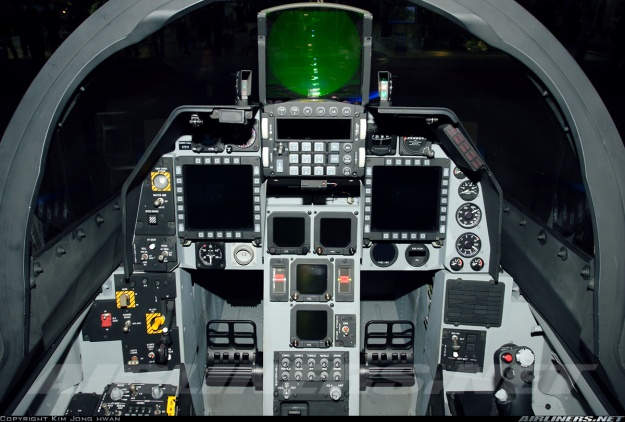
Two 127mm full colour Honeywell multifunction displays
 Image: mdisimulation.weebly.com
Image: mdisimulation.weebly.com Source: mdisimulation.weebly.com
Source: mdisimulation.weebly.com
Head-up display (HUD) supplied by BAE Systems
 Image: dodaam.com
Image: dodaam.com
Electronic Horizontal Situation Indicator
 Source: mdisimulation.weebly.com
Source: mdisimulation.weebly.com Source: mdisimulation.weebly.com
Source: mdisimulation.weebly.com
The full authority digital flight control system and avionics were developed by Lockheed Martin Aeronautics Division at Fort Worth.
The flight equipment includes a navigation / attack system, a Honeywell H-764G embedded global positioning / inertial navigation system and HG9550 radar altimeter, Rockwell Collins VIR-130A integrated VOR / instrument landing system and ARN-153V advanced digital tactical aid to navigation, and Raytheon ARC-232 VHF radio.
Honeywell H-764G embedded global positioning / inertial navigation system
EGI family includes the H-764
 Image: honeywell.com
Image: honeywell.com
HG9550 radar altimeter

ARN-153V advanced digital tactical aid to navigation
TCN-500 / AN/ARN-153(V) Advanced Digital TACAN Receiver-Transmitter
Field tested and proven over many years and on multiple platforms, the TCN-500 is the latest technology airborne Receiver-Transmitter (RT) component of the Tactical Airborne Navigation (TACAN) system.
The TCN-500 RT measures the slant-range distance and relative bearing to a selected ground station or an airborne beacon and computes velocity and time-to-go to that station.
An optional configuration measures slant-range distance to up to three selected ground stations for RHO-RHO or DME-DME area navigation.
Features & Benefits
- Digital A-1553 outputs for both distance and bearing
- Range: 390 nautical miles
- Solid-state, 500-watt transmitter
- Drop in” ARN-118 replacement when used with appropriate retrofit mount
- Pilot selectable (manual or A-1553) air-to-air range ratio capability
- Three-DME-station tracking capability
- TACAN-550 available as a “beaconing” transmitter function
Source rockwellcollins.com
Raytheon ARC-232 VHF radio

ARC-232 is airborne walkie-talkie model capable of voice and data communication air-to-air and air-to-surface and Have Quick Secure Communication. Source lignex1.com
 Image: dodaam.com
Image: dodaam.com
The AN/APG-67(V)4 multi-mode radar, supplied by Lockheed Martin, is installed in the nose of the LIFT version.
AN/APG-67(V)4 multi-mode radar (T-50 LIFT version)

Full Suite of Modes
Air to Air
- Range While Search Look-Up/Look-Down (LU/LD) at > 50/40 nmi
- Track While Scan LD at > 40 nmi
- Air Combat Manuevering at 10 nmi
- Head Up Display Search, Vertical Acquisition, Boresight and Slewable
- Adaptive Search Mode LU/LD
- Velocity Search
- Single Target Track
- Situation Awareness Mode Air to Surface
- Real Beam Ground Map and Expand
- Doppler Beam Sharpening Map – 40:1
- Freeze
- Ground Moving Target Indication > 40 nmi (small ship) and Track
- Air to Ground Ranging
- Fixed Target Track
- Beacon
- Sea Mode > 50 nmi (small ship)
Source 3mp.ir
The two-crew, tandem-stepped cockpit is fitted with an onboard oxygen generating system (OBOGS) and ejection seats supplied by Martin Baker of Uxbridge, UK.
On-board oxygen-generating system (OBOGS)
 Image: cobham.com
Image: cobham.com
Mk.16 KR16K zero/zero ejection seat

Losses and Ejection: Here
T-50 weapons
The aircraft has seven external hardpoints for carrying weapons, one on the centreline under the fuselage, two hardpoints under each wing and an air-to-air missile launch rail at the two wingtips.
The wingtip launch rails can carry AIM-9 Sidewinder missiles. The underwing and centreline hardpoints can carry rocket pods, air-to-surface missiles or air-to-air missiles according to the mission requirements, for example, AGM-65 Maverick missiles or mk82 / 83/ 84 bombs or rocket launchers.
In November 2005, the A-50 successfully test-fired an AIM-9L air-to-air missile.
AIM-9L air-to-air missile
The AIM-9L is essentially an AIM-9H with a new 4 micron Indium Antimonide detector, new Argon cooling system, FM modulated reticle and new fuze fitted to the AIM-9H airframe and controls. The InSb detector finally replaced the 1940s era PbS (lead sulphide) infra-red detector). The cassegrain system of the AIM-9H was retained, but a new FM reticle was adopted, necessitating some fundamental changes to the GCS. The new optical system allows acquisition and tracking of targets from all aspects, due the longer wavelength sensitivity of the InSb, with the filter employed to reject shorter wavelengths. Argon gas is used to cool the detector, with the coolant tank embedded in the missile’s seeker to allow use with arbitrary physically/electrically compatible launchers. Local Swedish designation is Rb.74. Upgrades include the AIM-9L Tactical, which is an upgraded version of the basic 9L missile. Next was the AIM-9L Genetic, which has increased infra-red counter counter measures (IRCCM), this upgrade consisted of a removable module which when placed in the GCS gave a infrared flare rejection (IRCCM) capability. Next came the AIM-9L(I), this had its IRCCM module hardwired into the GCS giving improved counter measures as well as an upgraded seeker system. Diehl BGT also markets the AIM-9L(I)-1 which again upgrades the AIM-9L(I) GCS (more insensitive to the recognition and shadowing against infrared flares) and is considered an operational equivalent to the initially “US only” AIM-9M. (Firing) Air Training Round designated ATM-9L, Captive Air Training Round designated CATM-9L and Dummy Air Training Round (for ground handling training) designated DATM-9L. The NATM-9L is equipped with special test and evaluation equipment. Over 5,500 rounds were built, with licensed production by Diehl BGT Germany and Mitsubishi in Japan. Source scramble.nl
AIM-120 AMRAAM

The AIM-120 AMRAAM (Advanced Medium-Range Air-to-Air Missile) is one of the most modern, powerful, and widely used air-to-air missiles in the entire world. After it entered limited service in 1991, this missile has been exported to about 35 countries around the world, where it has certainly been proven with over 3 900 test shots and 10 combat victories.
By the 1980s, the US deemed its current stock of air-to-air missiles, particularly the medium-range AIM-7 Sparrow, were obsolete, or at least not as capable as the latest Soviet missiles of the time. While the Sparrow was effective, with about 60 kills, it was not effective enough. In particular, it had one crushing fault—it was not fire-and-forget, meaning that the pilot was forced to remain on the scene and in danger until the missile reached its target. So, development of the AIM-120 AMRAAM began, along with European development of a short-range missile, resulting in the ASRAAM. In 1991, the AMRAAM entered limited service in the US Air Force. Two years later, it was fully operational there as well as the US Navy, while other countries started to show considerable interest.
 Image: defenceindustrydaily.com
Image: defenceindustrydaily.com
| Country of origin | United States |
| Entered service | 1991 |
| Missile | |
| Missile length | 3.66 m |
| Missile diameter | 0.18 m |
| Fin span | 0.53 m |
| Missile launch weight | 150.75 kg |
| Warhead weight | 22.7 kg |
| Warhead type | HE blast-fragmentation |
| Range of fire | up to 75 km |
| Guidance | active radar homing |
Source military-today.com

Maverick air-to-surface missile
The AGM-65 Maverick is a tactical, air-to-surface guided missile designed for close air support, interdiction and defense suppression mission. It provides stand-off capability and high probability of strike against a wide range of tactical targets, including armor, air defenses, ships, transportation equipment and fuel storage facilities. Maverick was used during Operation Desert Storm and, according to the Air Force, hit 85 percent of its targets.

The Maverick has a cylindrical body, and either a rounded glass nose for electro-optical imaging, or a zinc sulfide nose for imaging infrared. It has long-chord delta wings and tail control surfaces mounted close to the trailing edge of the wing of the aircraft using it. The warhead is in the missile’s center section. A cone-shaped warhead, one of two types carried by the Maverick missile, is fired by a contact fuse in the nose. The other is a delayed-fuse penetrator, a heavyweight warhead that penetrates the target with its kinetic energy before firing. The latter is very effective against large, hard targets. The propulsion system for both types is a solid-rocket motor behind the warhead.
The Maverick variants include electro-optical/television (A and B), imaging infrared (D, F, and G), or laser guidance (E). The Air Force developed the Maverick, and the Navy procured the imaging infrared and the laser guided versions. The AGM-65 has two types of warheads, one with a contact fuse in the nose, the other a heavyweight warhead with a delayed fuse, which penetrates the target with its kinetic energy before firing. The latter is very effective against large, hard targets. The propulsion system for both types is a solid-rocket motor behind the warhead.

| Primary Function: | Air-to-surface guided missile | ||||
| Contractors: | Hughes Aircraft Co., Raytheon Co. | ||||
| Power Plant: | Thiokol TX-481 solid-propellant rocket motor | ||||
| Autopilot | Proportional Navigation | ||||
| Stabilizer | Wings/Flippers | ||||
| Propulsion | Boost Sustain | ||||
| Variant | AGM-65A/B | AGM-65D | AGM-65G | AGM-65E | AGM-65F |
| Service | Air Force | Marine Corps | Navy | ||
| Launch Weight: | 462 lbs(207.90 kg) | 485 lbs(218.25 kg) | 670 lbs(301.50 kg) | 630 lbs(286 kg) | 670 lbs(301.50 kg) |
| Diameter: | 1 foot (30.48 centimeters) | ||||
| Wingspan: | 2 feet, 4 inches (71.12 centimeters) | ||||
| Range: | 17+ miles (12 nautical miles/27 km) | ||||
| Speed: | 1150 km/h | ||||
| Guidance System: | electro-optical television | imaging infrared | Laser | infrared homing | |
| Warhead: | 125 pounds(56.25 kilograms)cone shaped | 300 pounds(135 kilograms)delayed-fuse penetrator, heavyweight | 125 pounds(56.25 kilograms)cone shaped | 300 pounds(135 kilograms)delayed-fuse penetrator, heavyweight | |
| Explosive | 86 lbs. Comp B | 80 lbs. PBX(AF)-108 | |||
| Fuse | Contact | FMU-135/B | |||
| COSTS | Air ForceAGM-65D/G | NavyAGM-65E/F | |||
| Date Deployed: | August 1972 | February 1986 | 1989 | ||
| Aircraft: | A-10, F-15E and F-16 | F/A-18 | F/A-18 and AV-8B | ||
AGM-65 Maverick data fas.org
Rockeye II anti-tank cluster bomb

The CBU-100 Cluster Bomb (also called the Mk-20 Rockeye II) is an American cluster bomb which is employed primarily in an anti-tank mode. It weighs 490 pounds and carries 247 Mk 118 Mod 1 bomblets.
The anti-tank cluster bomb is an air-launched, conventional free-fall weapon. The Mk 20, CBU-99, and CBU-100 are used against armored vehicles.
When the Mk 20 bomb cluster is released from the aircraft, the arming wires (primary and/or optional arming) are pulled sufficiently to arm the Mk 339 fuze (and recently the FMU-140 fuze) and release the fins. The positive armed fin release arming wire frees the fin release band, and the movable fins snap open by spring-force. Functioning of the fuze initiates the linear shaped charges in the dispenser which cut the dispenser case in half and disperse the bombs/bomblets. When the Mk 339 Mod 1 primary fuse arming wire is pulled, the fuze will function 1.2 seconds after the arming wire has been extracted. If the pilot selects the option time (4.0 seconds), both the primary and option arming wires must be pulled. If the pilot selects the option time and the primary arming wire is not pulled, the fuze will fail to function and be a dud. Source revolvy.com
GBU-38 500-pound Joint Direct Attack Munition (JDAM)
| GENERAL DATA: | |
|---|---|
| Type: Guided Weapon | Weight: 253 kg |
| Length: 2.35 m | Span: 0.43 m |
| Diameter: 0.27 | Generation: None |
| Properties: Weapon – INS w/ GPS Navigation |
| Targets: Land Structure – Soft, Land Structure – Hardened, Runway |
| WEAPONS: |
|---|
| GBU-38(V)1/B JDAM [Mk82] – (USAF, 2004) Guided Weapon Land Max: 22.2 km. |
Source cmano-db.com
CBU-105 Sensor Fused Weapon (SFW)

| GENERAL DATA: | |
|---|---|
| Type: Guided Weapon | Weight: 450 kg |
| Length: 2.34 m | Span: 0.52 m |
| Diameter: 0.41 | Generation: None |
| Properties: Weapon – INS w/ GPS Navigation |
| Targets: Land Structure – Soft, Mobile Target – Soft |
| WEAPONS: |
|---|
| CBU-105 WCMD [CBU-97/B SFW, 10 x BLU-108/B Anti-Tank Bomblets] – (2000, CBU-97) Guided Weapon Land Max: 27.8 km. |
Source cmano-db.com
Mk82 / 83/ 84 bombs

| GENERAL DATA: | |
|---|---|
| Type: Bomb | Weight: 241 kg |
| Length: 2.0 m | Span: 0.4 m |
| Diameter: 0.0 | Generation: None |
| Targets: Surface Vessel, Land Structure – Soft, Land Structure – Hardened, Runway, Mobile Target – Soft, Mobile Target – Hardened |
| WEAPONS: |
|---|
| Mk82 500lb LDGP – (1954) Bomb Surface Max: 1.9 km. Land Max: 1.9 km. |
*Note – data for Mk82 only
Source cmano-db.com
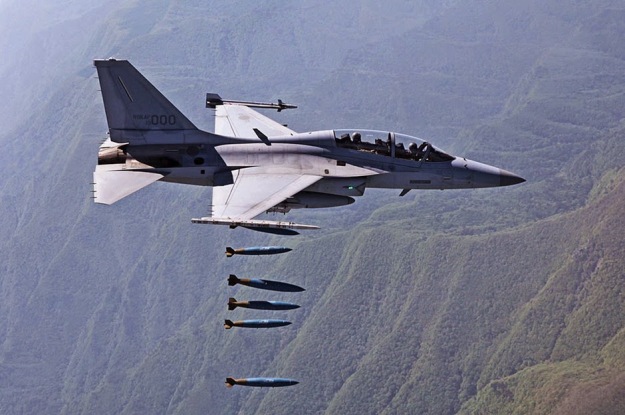
LAU-3/A 19-tube 2.75″ rocket launcher
Hydra rocket
 2.75 inch (70 mm) Hydra rocket
2.75 inch (70 mm) Hydra rocket
Hydra-70 Family
In the following, the nine main variants of the Hydra-70 rocket are presented:
M151 High-Explosive:
The M151 HEPD is a unitary fragmenting 10-pound anti-personnel, anti-material warhead with the M423 Point Detonating Fuze. Upon detonation, the warhead fragments into thousands of small high velocity fragments. The fuzed warhead is 16.2″ long and weighs 9.3 pounds.
M156:
The M156 white phosphorus (smoke) is primarily used for target marking. The M156 has the same ballistic characteristics as the M151 warhead and is of similar construction. Filler for the M156 is 2.2 pounds of white phosphorus with a 0.12 pound bursting charge of composition B. The fuzed warhead is 16.2″ long and weighs 9.65 pounds.
M229 High Explosive:
The M229 High Explosive warhead is a heavier version of the M151. The U.S. Army is currently not buying this variant. The fuzed warhead is 26″ long and weighs 17 pounds.
M255A1 Flechette:
The M255A1 Flechette warhead consists of a nose cone assembly, a warhead case, an integral fuze, 1,179 60-grain flechettes and an expulsion charge assembly. The primary fuze (M439) is remotely set with the Aerial Rocket Control System (ARCS) Multifunctional Display (MFD) or Rocket Management System (RMS) to provide a range from 500 meters to 7,200 meters. At expulsion, the 1,179 60-grain, hardened-steel flechettes separate and form a disk-like mass which breaks up with each flechette assuming an independent trajectory. The flechette uses kinetic energy derived from the velocity of the rocket to produce the desired impact and penetration of the target. The fuzed warhead is 26.9″ long and weighs 14 pounds.
M257 Illuminating Flare:
The M257 Illuminating warhead is designed to provide battlefield illumination and does not require the use of Infrared (IR) goggles. The M257 flare rocket can be launched by from either fixed wing or rotary-wing aircraft. The M442 motor burnout fuze functions after a 9-second delay. The fuzed warhead is 29.1″ long and weighs 11 pounds.
M261 Multi-Purpose Submunition (MPSM):
The MPSM warhead (weight is 13.9 pounds) provides improved lethal effectiveness against area targets such as light armor, wheeled vehicles, materiel, and personnel. The M73 Submunitions are deployed over the target and descend almost vertically. The M261 Warhead is a cargo warhead consisting of a nose cone assembly, a case, integral fuze, nine submunitions, and an expulsion charge assembly. The primary M439 warhead fuze is remotely set with the Aerial Rocket Control System (ARCS), Multifunctional Display (MFD) or Rocket Management System (RMS) to provide a range from 500 meters to 7,200 meters.
M264 RP Smoke:
The M264 RP (red phosphorous) Smoke is used as a red phosphorous filled smoke rocket propelled by the Mk 66 motor and the smoke is deployed at a range set remotely from within the aircraft cockpit. The M264 warhead is used for smoke obscuration in the visible light spectrum. The fuzed warhead is 26.9″ long and weighs 8.6 pounds.
M274 Smoke Signature (practice):
The M274 warhead is a smoke/flash signature practice warhead used for pilot/gunner training missions and consists of a cast iron warhead modified with vent holes, an aluminum nose cap with firing pin, a M423 fuze safe and arming device, and a smoke/flash cartridge. The fuzed warhead is 16.2″ long and weighs 9.3 pounds.
M278 Infrared Flare:
The M278 Infrared Flare warhead is designed for battlefield illumination for use with Infrared (IR) goggles. The flare rockets can be launched from either fixed wing or rotary-wing aircraft. The 442 motor burnout fuze functions after a 9-second delay. The fuzed warhead is 29.1″ long and weighs 11 pounds.
WTU-1/B (practice):
The fuzed warhead is 16.2″ long and weighs 9.3 pounds.
Source fi-aeroweb.com
LOGIR rockets
LOGIR rockets Guided a precision guided 2.75 inch (70 mm) rocket for use with existing Hydra 70 systems in service, as such it has many similarities with the Advanced Precision Kill Weapon System program. The principal difference between the systems is that while APKWS uses terminal laser homing, requiring the target to be ‘painted’ until impact, LOGIR would guide to a position supplied by the launching aircraft, using imaging infrared in the terminal phase making it a true fire-and-forget weapon.Another advantage of LOGIR was that it was “especially effective against swarm attacks by enemies like small boats, as there’s no need for ongoing guidance.”
A 20mm General Dynamics Armaments three-barrel M61 cannon is installed internally on the A-50 LIFT version. The gun is mounted behind the cockpit and carries 205 rounds of ammunition in a linear linkless feed system. The A-50 LIFT can carry electronic warfare pods and a radar warning receiver.
20mm General Dynamics three-barrel M61 cannon
 20 mm (0.787 in) General Dynamics A-50 3-barrel rotary cannon
20 mm (0.787 in) General Dynamics A-50 3-barrel rotary cannon
Specifications
| Gun type | Three-barrel, 20mm, externally powered Gatling gun |
| Weight | 132 pounds (60 kg) |
| Rate of fire | Up to 1,500 shots per minute |
| Dispersion | 5 milliradians diameter, 80 percent circle |
| Muzzle velocity | 8.0 milliradians diameter, 80 percent circle (M50) |
| Average recoil force | 1,300 pounds (5.8 kN) |
| Feed system | Linked or linkless |
| Drive system | Hydraulic, electric, pneumatic |
Technical data M-197 20mm Gatling Gun gd-ots.com
Engines
 Image id: 23854 – The engine nozzle and afterburner assembly of KAI T-50 Number ‘4’ of the Korean Air Force Black Eagles. The aircraft was in attendance at the 2012 Farnborough Airshow. Taken 2012-07-09 by Tony Hart Photo URL: http://www.pixstel.com/23854.html
Image id: 23854 – The engine nozzle and afterburner assembly of KAI T-50 Number ‘4’ of the Korean Air Force Black Eagles. The aircraft was in attendance at the 2012 Farnborough Airshow. Taken 2012-07-09 by Tony Hart Photo URL: http://www.pixstel.com/23854.html
The T-50 Golden Eagle is powered by a single General Electric turbofan engine, type F404-GE-102, with full authority digital electronic control (FADEC). It is a derivative of the 402 with additional improvements in the turbine and afterburner. The engine has twin side-mounted air intakes on either side of the fuselage under the wing.
 T-50B – These pictures were taken and shared with the web by Howard Mason
T-50B – These pictures were taken and shared with the web by Howard Mason
The engine, with a three-fan stage and seven axial stage arrangement, is equipped with full authority digital engine control and generates 78.7kN with afterburn.
General Electric F404 -102
 General Electric F404 (built under license by Samsung Techwin) afterburning turbofan
General Electric F404 (built under license by Samsung Techwin) afterburning turbofan
Performance Specifications
| (Sea level/standard day) |
English |
SI |
| F404 -102/402 | ||
| Thrust class |
17,700 lb |
78.7 kN |
| Length |
154 in |
391 cm |
| Airflow |
146 lb/sec |
66 kg/sec |
| Maximum diameter |
35 in |
89 cm |
| Weight |
2,282 lb |
1,035 kg |
| Inlet diameter |
28 in |
71 cm |
| Pressure ratio |
26:1 |
26:1 |
Source geaviation.com
 Image id: 23813 (picture 4 of 11 selected) – A Black Eagles KAI T-50 Golden Eagle taking off at the 2012 Farnborough Airshow. Taken 2012-07-10 by Colin K. Work URL: http://www.pixstel.com/23813.html
Image id: 23813 (picture 4 of 11 selected) – A Black Eagles KAI T-50 Golden Eagle taking off at the 2012 Farnborough Airshow. Taken 2012-07-10 by Colin K. Work URL: http://www.pixstel.com/23813.html
The aircraft has seven internal fuel tanks, five in the fuselage and two in the wings, which can carry 2,655l of fuel with the option of three additional 570l external fuel tanks.
The aircraft is fitted with an Argo-Tech fuel system. The power generator is supplied by Hamilton Sundstrand.
Landing gear
 T-50B – These pictures were taken and shared with the web by Howard Mason
T-50B – These pictures were taken and shared with the web by Howard Mason
The aircraft is equipped with Messier Dowty retractable tricycle-type landing gear. Each unit is single wheeled and fitted with oleo pneumatic shock absorbers. The main wheels are retracted into the trunks of the engine air intakes. The nose wheel retracts forward.
Operators: Here
T-50 performance
The T-50 can fly at a maximum speed of 1,837km per hour. The range and service ceiling of the aircraft are 1,851km and 16,764m respectively. The service life is 10,000 hours.
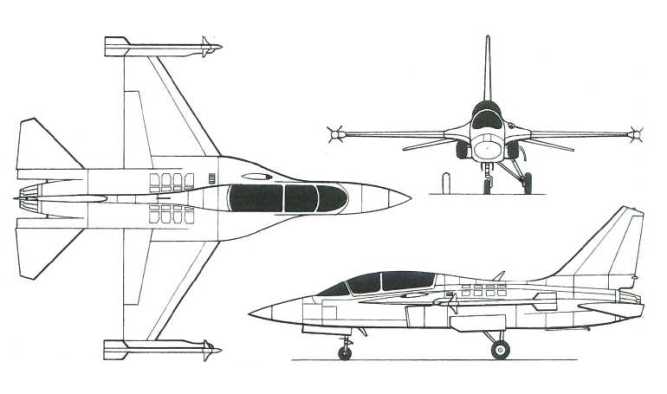
| Entered service | 2005 |
| Crew | 2 men |
| Dimensions and weight | |
| Length | 13.14 m |
| Wing span | 9.45 m |
| Height | 4.94 m |
| Weight (empty) | 6.4 t |
| Weight (maximum take off) | 12.3 t |
| Engines and performance | |
| Engines | 1× General Electric F404 turbofan |
| Traction (dry / with afterburning) | 53.07 / 78.7 kN |
| Maximum speed | 1 640 km/h |
| Service ceiling | 14.63 km |
| Range | 1 851 km |
Specification military-today.com
Main material source airforce-technology.com
Images are from public domain unless otherwise stated
Revised May 08, 2017
Updated Jan 08, 2018
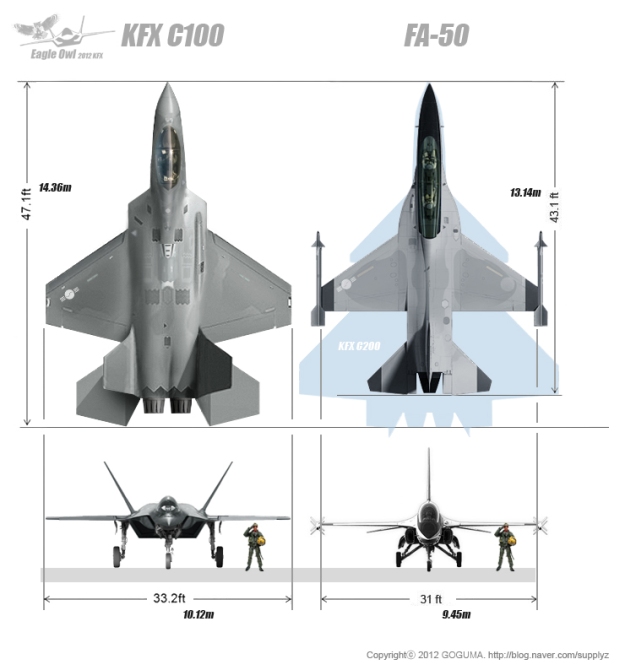

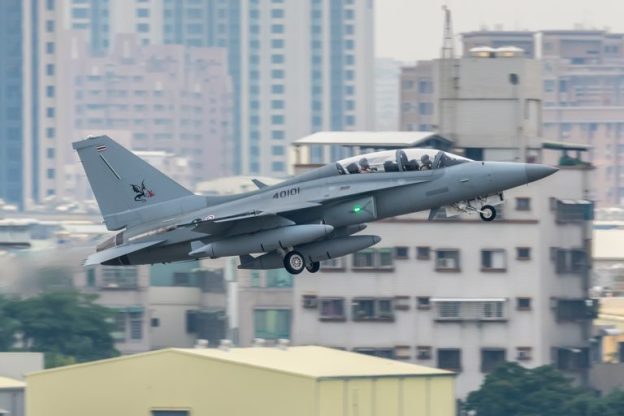









It is far from a pocket fighter since the performance is very close to the F-18 Hornet, and with the 22,500 lb thrust it can out perform the F-18. This is a unique fighter that is smaller, fast, and can out turn the larger fighters. In a dog fight they will hold their own.
LikeLike
Pingback: KAI makes first delivery of fighter jets to the Philippines | thaimilitaryandasianregion
Not a problem and that’s why I think their still is a niche for Pocket fighters and Point defense fighters such as the M-346 Master, BAE Hawk 200, Yak-130 and the F/A50 Golden Eagle. Look at the first generation of Pocket fighters and point defense fighters such as the A-4 Skyhawk.
LikeLike
That’s why the F/A-50 fills a niche for a low cost pocket fighter and a point defense fighter for countries who are on an extremely tight budget. Pocket fighters like the M-346 Master, BAE Hawk 200, Yak-130 and the F/A50 Golden Eagle fulfill a niche for countries like the Philippines and even small countries who can’t afford High end European, Russian or American fighters. That’s why for countries who can’t afford a Gripen, the M-346 Master, BAE Hawk 200, Yak-130 and the F/A50 Golden Eagle is an option for them.
I also think you need to cite this article in your blog that War is boring did
This South Korean Jet Is a Bargain Dog fighter
View at Medium.com
LikeLike
Actually there are only 2 supersonic modern Pocket fighters as you call it the other is the Chinese Hongdu L-15 Falcon https://thaimilitaryandasianregion.wordpress.com/2015/10/31/hongdu-jl-10l-15-falcon-training-and-light-attack-aircraft/ the downside is it’s weapons which are Chinese for Air Forces which are already using western weapons it is costly I think that is one reason they failed the bid with the Royal Thai Air Force. But the Chinese have other supersonic trainers such as the Guizhou JL-9 https://thaimilitaryandasianregion.wordpress.com/2015/11/01/jl-9-jianlian-9-trainer-light-attack-aircraft-china/ but I guess they have the same downside unless you are already using Chinese weapons I guess. BTW thanks for the link to the article
LikeLiked by 1 person